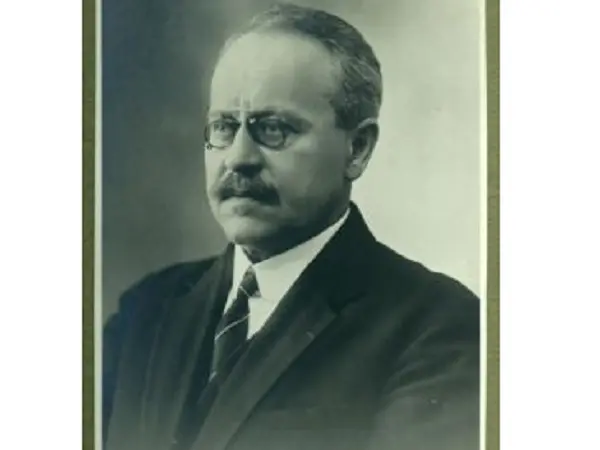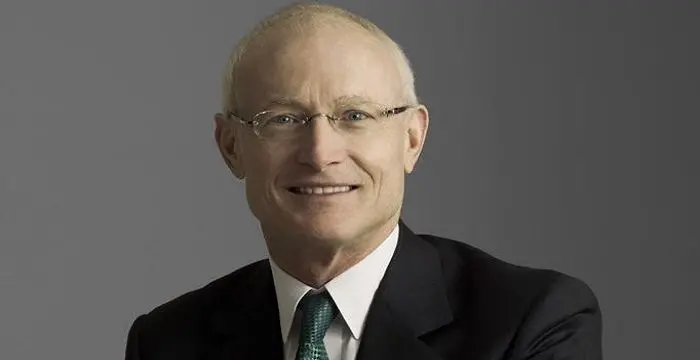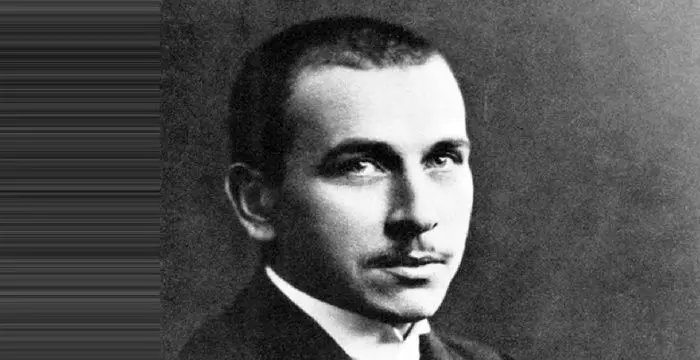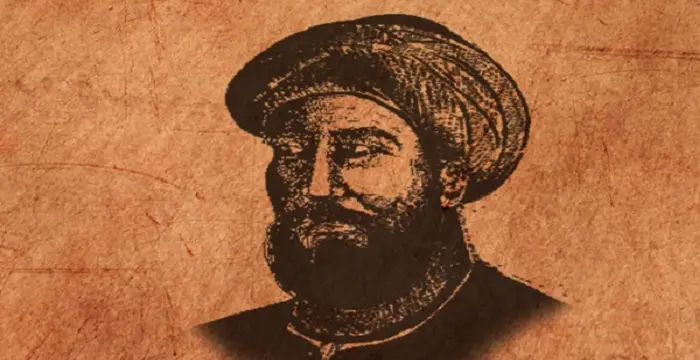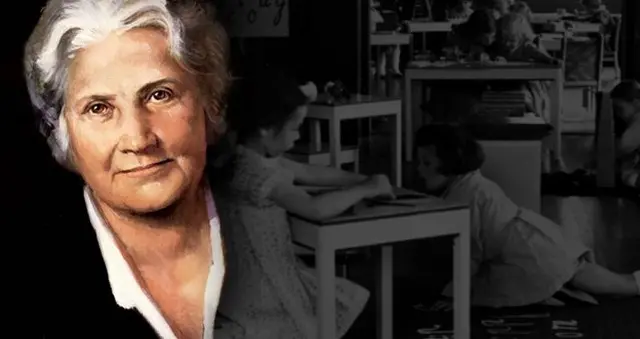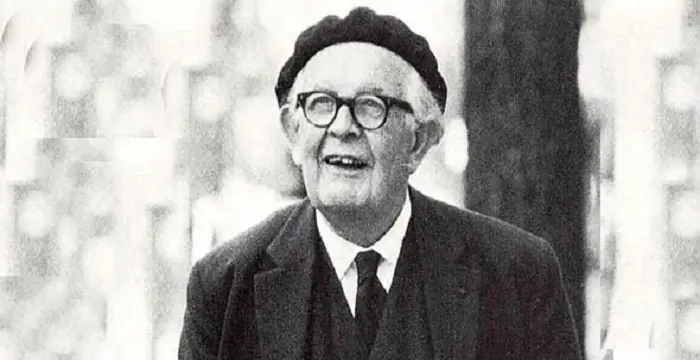
Ludvig Puusepp - Estonian Surgeon, Birthday and Family
Ludvig Puusepp's Personal Details
Ludvig Puusepp was an Estonian surgeon and the world's first professor of neurosurgery
| Information | Detail |
|---|---|
| Birthday | 1875 |
| Died on | October 19, 1942 |
| Nationality | Estonian |
| Famous | Physicians, Surgeons, Medical Scientists, Estonian Surgeon, Researcher, the World's First Professor of Neurosurgery |
| Spouses | Victoria-Stephania Goebel |
| Founder / Co-Founder |
|
| Birth Place | Kiev |
| Gender | Male |
| Father | Martin Puusepp |
| Born in | Kiev |
| Famous as | Estonian surgeon,researcher and the world's first professor of neurosurgery |
| Died at Age | 67 |
Ludvig Puusepp's photo
Who is Ludvig Puusepp?
Estonian scientist Ludvig Puusepp is recognized as the world’s first professor of neurosurgery. He studied neurology in Russia under prominent neurologists, becoming a professor of neuropathology and a key innovator in surgeries of the brain and nervous system. He is remembered as a diligent visionary ahead of his time, a researcher who not only advanced his field but set the groundwork for generations of improvements in the treatment of diseases and injuries affecting the spine and brain. Undeterred by the conflicts surrounding him in late-19th and early-20th century Europe, he worked and studied despite intense poverty, family illness, international economic depression, the Russian Revolution, and several wars. As a professor of neurology and neurosurgery, he lectured at medical schools around Europe, educating dozens of future specialists. Diagnostic tools he pioneered, including identifying a slight abnormality in the movement of the little toe as a sign of a neurological disorder, are still used by doctors. He engaged enthusiastically in the exchange of scientific knowledge, publishing extensively in research journals and taking advantage of innovations, including those in neuroimaging, being made throughout the world. He traveled throughout Europe, demonstrating his skills, giving legitimacy to medical research and surgery in an age when quack-scientists continued to undermine health advances
Childhood & Early Life
Born in Kiev to an Estonian father and Polish-Czech mother on December 3, 1875, Puusepp was raised in a working-class family. His father was a shoemaker.
At the age of eight, he earned a place in the German School, where he completed three years of study in two years, despite being one of the youngest students.
Earning a scholarship for an elite secondary school, he supplemented his family’s income through tutoring when his father became too ill to work. He still graduated with high honors.
He attended the St. Petersburg Military Medical Academy from 1894 to 1899.
He trained with the renowned Russian neurologist Professor Vladimir Bechterew while in medical school. Under Bechterew’s tutelage, he developed an appreciation for the weaknesses in modern surgeries involving the nervous system. In 1899, he completed his first neurological surgery.
Career
After his graduation from medical school, Puusepp taught in a school affiliated with the Baltic Shipyards. In 1900, they sent him to Vienna, Paris, Berlin, London, and Copenhagen to learn light therapy techniques. He became a vocal and active member of several European medical societies during this period.
In 1902, he defended his doctoral dissertation, “Cerebral Centers Governing the Erection and Ejaculation of the Penis.” Many of his early publications deal with sexual function and malfunction as well as the effects and causes of alcoholism.
He became a senior physician for the Russian Red Cross Flying Squad during the Ruso-Japanese War of 1904-1905, supervising the care of as many as 600 wounded at a time. He developed a cart for transporting three wounded men at a time and earned multiple medals from the military and Red Cross.
He traveled to the United States in 1909 to learn about women’s medical education. He wrote to acquaintances he now believed women could work as well as men in medicine and science.
In 1910, he became the world’s first professor of neurosurgery at St. Petersburg’s Institute of Psychoneurology.
After an injury on the battle front in World War I, he returned to the Institute of Psychoneurology in 1915. He subsequently wrote several research papers on the neurological effects of combat service and injury.
In 1920, he relocated to Estonia and was appointed a Professor of Neurology at the University of Tartu and the Medical Major General and Consultant to the Estonian army.
In 1921, he performed the first operation on a brain tumor in Estonia.
He joined several eugenics and mental hygiene organizations in the 1920s and 1930s, advocating research into genetic causes of retardation and the founding of schools for mentally disabled youth.
Patients came from around Europe to be treated under his care at the university. While at the University of Tartu, he made the most significant innovations of his career in neurosurgery, including surgical techniques for the brain cavity, treatment of brain tumors, and the diagnosis of neurological disorders through nerve stimulation.
Major Works
Puusepp’s 1916 paper Травматический невроз военного времени (“Traumatic War Neurosis”) was among the earliest scientific research into the diagnosis and treatment of neurological injuries received in combat.
His 1929 textbook, Die Tumoren des Gehirns (Brain Tumours), was a central text for understanding brain tumors for decades.
Between 1932 and 1939, he completed a two-and-a-half volume textbook Die chirurgische Neuropathologie (Surgical Neuropathology) that remains a reference today and included the first detailed description of how to treat compressed intervertebral discs through surgery.
Awards & Achievements
He was awarded an honorary doctorate by the University of Padua, Italy, in 1922.
The University of Vilnius, Lithuania, honored him with an honorary doctorate in 1929.
He was made a Charter Member by the Estonian Academy of Sciences, in 1938.
He was included as a corresponding member by French Academy of Surgery.
The USSR honored him as a 'Merited Scientist' in 1940.
Personal Life & Legacy
Puusepp married Maria Kotšubei in 1906. Together they left the Soviet Union in 1920, feeling it was becoming an unsafe place for scientists. His wife died of tuberculosis in 1929.
He later married Maria Küppar. Their first and only child Liivia was born in 1932. She also became a neurosurgeon.
Diagnosed with a carcinoma of the stomach, he died in 1942 and is buried in Tartu, Estonia at the Raadi cemetery.
He is widely celebrated in Estonia. A granite and bronze monument was erected in his honor in Tartu in 1982 and the present-day clinic of neurology and neurosurgery at the University of Tartu is located on Ludvig Puusepp Street.
Trivia
While in medical school, he trained with famous professional wrestlers who felt that he could have a good career in wrestling if medicine didn’t work out.
His family name means carpenter in Estonian.
An avid social reformer, he advocated for temperance and anti-drug societies throughout his adulthood, founding several societies
// Famous Researcher
Michael Porter
Michael Porter is an economist, researcher, author, advisor, speaker and teacher. This biography profiles his childhood, career, academic contribution, works, life, achievements and timeline.
Alfred Wegener
Alfred Wegener was a renowned German geophysicist and meteorologists who is known for pioneering the ‘Continental Drift’ theory. To know more about his childhood, profile, timeline and career read on.
Richard Axel
Richard Axel is Nobel Prize winning American scientist, well-known for his scientific work pertaining to ‘olfactory receptors’. Read this biography to learn more about his childhood, life, works, achievements and timeline.
Ludvig Puusepp's awards
| Year | Name | Award |
|---|---|---|
Other | ||
| 0 | Doctor of Medical Science in 1902 | |
Ludvig Puusepp biography timelines
- // 3rd Dec 1875Born in Kiev to an Estonian father and Polish-Czech mother on December 3, 1875, Puusepp was raised in a working-class family. His father was a shoemaker.
- // 1894 To 1899He attended the St. Petersburg Military Medical Academy from 1894 to 1899.
- // 1899He trained with the renowned Russian neurologist Professor Vladimir Bechterew while in medical school. Under Bechterew’s tutelage, he developed an appreciation for the weaknesses in modern surgeries involving the nervous system. In 1899, he completed his first neurological surgery.
- // 1900After his graduation from medical school, Puusepp taught in a school affiliated with the Baltic Shipyards. In 1900, they sent him to Vienna, Paris, Berlin, London, and Copenhagen to learn light therapy techniques. He became a vocal and active member of several European medical societies during this period.
- // 1902In 1902, he defended his doctoral dissertation, “Cerebral Centers Governing the Erection and Ejaculation of the Penis.” Many of his early publications deal with sexual function and malfunction as well as the effects and causes of alcoholism.
- // 1904 To 1905He became a senior physician for the Russian Red Cross Flying Squad during the Ruso-Japanese War of 1904-1905, supervising the care of as many as 600 wounded at a time. He developed a cart for transporting three wounded men at a time and earned multiple medals from the military and Red Cross.
- // 1909He traveled to the United States in 1909 to learn about women’s medical education. He wrote to acquaintances he now believed women could work as well as men in medicine and science.
- // 1910In 1910, he became the world’s first professor of neurosurgery at St. Petersburg’s Institute of Psychoneurology.
- // 1915After an injury on the battle front in World War I, he returned to the Institute of Psychoneurology in 1915. He subsequently wrote several research papers on the neurological effects of combat service and injury.
- // 1916Puusepp’s 1916 paper Травматический невроз военного времени (“Traumatic War Neurosis”) was among the earliest scientific research into the diagnosis and treatment of neurological injuries received in combat.
- // 1920In 1920, he relocated to Estonia and was appointed a Professor of Neurology at the University of Tartu and the Medical Major General and Consultant to the Estonian army.
- // 1920 To 1929Puusepp married Maria Kotšubei in 1906. Together they left the Soviet Union in 1920, feeling it was becoming an unsafe place for scientists. His wife died of tuberculosis in 1929.
- // 1921In 1921, he performed the first operation on a brain tumor in Estonia.
- // 1922He was awarded an honorary doctorate by the University of Padua, Italy, in 1922.
- // 1929His 1929 textbook, Die Tumoren des Gehirns (Brain Tumours), was a central text for understanding brain tumors for decades.
- // 1929The University of Vilnius, Lithuania, honored him with an honorary doctorate in 1929.
- // 1932 To 1939Between 1932 and 1939, he completed a two-and-a-half volume textbook Die chirurgische Neuropathologie (Surgical Neuropathology) that remains a reference today and included the first detailed description of how to treat compressed intervertebral discs through surgery.
- // 1932He later married Maria Küppar. Their first and only child Liivia was born in 1932. She also became a neurosurgeon.
- // 1938He was made a Charter Member by the Estonian Academy of Sciences, in 1938.
- // 1940The USSR honored him as a 'Merited Scientist' in 1940.
- // 1942Diagnosed with a carcinoma of the stomach, he died in 1942 and is buried in Tartu, Estonia at the Raadi cemetery.
- // 1982He is widely celebrated in Estonia. A granite and bronze monument was erected in his honor in Tartu in 1982 and the present-day clinic of neurology and neurosurgery at the University of Tartu is located on Ludvig Puusepp Street.
// Famous Physicians
Al-Zahrawi
Al-Zahrawi, was an illustrious medieval Arab Muslim physician and surgeon. Check out this biography to know about his childhood, family life, achievements and interesting facts about him.
Jabir Ibn Hayyan
Jabir Ibn Hayyan was a medieval era polymath. Check out this biography to know about his life, works and achievements.
Maria Montessori
Maria Montessori was a physician and educator who developed the approach of Montessori education. This biography of Maria Montessori provides detailed information about her childhood, life, achievements, works & timeline.
Mae Jemison
Mae Carol Jemison is a famous American astronaut who became the first African American astronaut to travel to space. To know more about her childhood, career, profile and timeline read on
Paul Farmer
Paul Farmer is an anthropologist and physician who co-founded the health organization - Partners In Health (PIH). This biography of Paul Farmer provides detailed information about his childhood, life, achievements, works & timeline.
Jean Piaget
Jean Piaget was a psychologist and philosopher known for his theory of cognitive development. This biography of Jean Piaget provides detailed information about his childhood, life, achievements, works & timeline.
Ludvig Puusepp's FAQ
When was Ludvig Puusepp died?
Ludvig Puusepp was died at 1942-10-19
Which age was Ludvig Puusepp died?
Ludvig Puusepp was died at age 67
Where is Ludvig Puusepp's birth place?
Ludvig Puusepp was born in Kiev
What is Ludvig Puusepp nationalities?
Ludvig Puusepp's nationalities is Estonian
Who is Ludvig Puusepp spouses?
Ludvig Puusepp's spouses is Victoria-Stephania Goebel
Which company or organization was founded by Ludvig Puusepp?
Ludvig Puusepp was the founder/co-founder of He was a founding editor of Eesti Arst (Estonian Physician), Puusepp founded the medical journal Folia Neuropathologica Estoniana, published from 1923 to 1939, He was one of the founding members of the Estonian Neurological Society (Eesti Neuroloogide Se
Who is Ludvig Puusepp's father?
Ludvig Puusepp's father is Martin Puusepp
How famous is Ludvig Puusepp?
Ludvig Puusepp is famouse as Estonian surgeon,researcher and the world's first professor of neurosurgery
